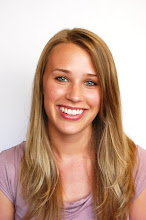Lisa and I took a look at our Rhino model and tried to imagine it as four separate buildings. If we deleted the circulation between the four bands, and only connected the top floor of each band (shared program) we would create a new experience for our students, reduce circulation, and add space to our central courtyard. We shifted some of the shared program around on the ground floor to free up some more space for the courtyard. We switched the dining hall with the administrative center; we did this not only to free up space but also for daylighting reasons. We thought back to the obnoxiously bright dining hall at ITT and decided that we didn't want the dining hall to get too much direct light from the south. By placing on the east side, it would receive more diffused light. The administrative center might want more direct light in the offices. We also changed the proportions of the auditorium to make it longer and skinnier, freeing up space for the courtyard above.
We also worked on alligning the northern end of each band and rotating the curves off of that. The north side is rotated the least, only 5 degrees, because it does not need more toplighting in addition to the direct southern light it will be receiving. The east side is rotated the most, 10 degrees, because it needs the most extra toplighting since it is covered in shadows most often. The west side is rotated 7.5 degrees because it needs a little more light than the north end but does not need as much help as the east side.
The connections between the top floors of each program will give us an edge for our atrium. However, we are having trouble figuring out how to connect these top bands because the height differences are too steep (up to 28 feet).
Out of the Blue
-
I know it seems crazy to start posting to this blog in the middle (more
like the end) of the semester but it seems like a good way to keep t...
15 years ago




No comments:
Post a Comment